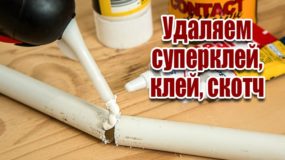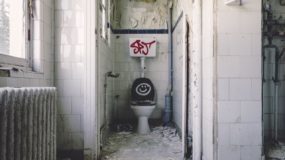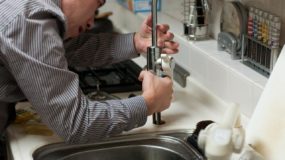The fungus suddenly appears in the house and often becomes the causative agent of diseases, including allergies. The detection and elimination of mold is an extremely important task. You will learn about how to get rid of fungus on the walls with folk remedies at home in today's article.
Molds have an overwhelming effect on the human immune system. As a result, people in whose house the attack has settled have chronic diseases. In addition, dark spots significantly spoil the interior.
To get rid of the fungus on the walls in the apartment and the house, first of all, you will have to establish the reason for its appearance. Miniature mold spores are present in water and air. Once in a favorable environment, they begin to grow rapidly.
Most often, poor ventilation and high humidity contribute to mold. Mold is a simple fungus that likes moist, poorly ventilated rooms. In most cases, the problem appears in damp houses and apartments located on the ground floor. Although, if it is improperly wet the room or make it tropical plants, fungus and mold will appear in the most unexpected place.
There is no finishing or building material that is not susceptible to the appearance of fungus. A common place for appearance is a bathroom or toilet, but it is often found in refrigerators, on wallpaper, on the walls of corner apartments.
The most effective folk remedies
In the fight against misfortune, folk remedies have proven themselves well. Of course, they can not be compared with the purchased primer, but there are less toxic substances in their composition.
Bleach
The usual bleach, which includes sodium hypochlorite, will eliminate almost all varieties of fungal mold. This active substance kills the fungus along with spores. The bleaching agent is used to clean floors, glass, tiles and walls. Just remember, under its influence, some things can deteriorate or lose color.
Bleach can corrode the skin. I recommend using it in a well-ventilated area, after putting on rubber gloves. For surface treatment use a mixture consisting of ten parts of water and one part of a bleaching agent.
Table vinegar
A weak acid that helps get rid of fungal mold. Vinegar has a pronounced smell, but does not emit hazardous fumes to health. To combat mold, apply vinegar to the surface using a spray gun, and after an hour rinse thoroughly with water and ventilate the room. For preventive purposes, spray the problematic surface once a week with vinegar.
Hydrogen peroxide
You can kill the fungus on the walls with hydrogen peroxide. This antibacterial is sold in any pharmacy. It does not contain toxins and does not have a pungent odor. The medicine removes the fungus on various materials, but is used carefully on the painted surface, since peroxide is characterized by a whitening effect.
Ammonia
Often, ammonia is used to destroy the fungus.It shows the greatest efficiency on a solid surface, and on a porous material shows a negligible effect. To eliminate the fungus, mix ammonia in equal amounts with water and spray on the infected area. Wash off the mixture after a few hours.
Liquid ammonia has a pungent odor that causes a headache and discomfort in the throat. It is strictly forbidden to mix ammonia with a bleaching agent, since the resulting liquid emits toxic gas.
Baking soda
You can fight fungus and mold on the walls with baking soda - a safe and natural cleaner. Using soda does no harm to dogs with cats, no family members. Dissolve a small spoonful of soda in a glass of water, and then spray the affected area with a solution of the fungus. Soda is not completely washed off, as it perfectly protects against the secondary appearance of fungal mold.
When you get rid of the misfortune, solve part of the problem. You will have to make sure that the room is dry and fresh, otherwise the fungus will appear again.
Video tips and tricks
Step-by-step action plan against fungus in the apartment
Mucus, gray coating, darkened walls and black corners are signs of fungus and mold in the apartment. When favorable conditions appear in the apartment, mold spores are actively developing. As a result, damaged surfaces appear in the room that look ugly. Moreover, the fungus destroys wall coverings.
Fungal mold actively releases spores that the inhabitants of the home have to breathe. Naturally, this is very harmful to health. If a fungus has appeared in the apartment, it means that the housing has very high humidity, which, together with room temperature, provides optimal conditions. First of all, the bathroom, the bathroom and the kitchen are attacked.
- Normalize humidity level. Many people use antiseptics and fungicides to perfectly destroy the fungus. Such tactics, without eliminating the cause of the appearance of fungal mold, are not entirely correct. First of all, they normalize the humidity level in the apartment.
- Check ventilation and exhaust. Check ventilation systems at home with a match, lighter or other source of fire. If the result is unsatisfactory, you will have to contact the appropriate authority to fix the problem. If the ventilation does not work well, try installing an outdoor fan.
- Checking the door seal. A well-sealed door prevents normal air exchange. At the bottom of the door in the bathroom should be ventilation holes. If the “perforated” door does not fit into the interior or does not like this approach to solving the problem, increase the gaps between the doors and the frame.
- Checking windows in the apartment. When choosing a window system, look for the presence of an air exchange system with the environment - the street. Windows equipped with ventilation or climate valves are sold. Ideal option - windows with supply valves. With increasing humidity in the room, they are triggered automatically, and after normalization, close.
- Fungus and mold removal. After eliminating the causes of the problem, proceed with active actions aimed at the destruction. First of all, use a metal brush to remove traces of fungus. During the procedure, use a respirator that protects the respiratory system. When mechanical removal is complete, do not flush the wall.
- Special surface treatment. An antiseptic, fungicide or folk remedies discussed above are suitable.After applying the solution to the wall, wait a few hours for the drug to take effect.
If the room is not in a neglected state, using step-by-step recommendations, you will return it to its normal state.
Methods for removing fungus in a private house
Even in a house with expensive repairs and excellent furniture on the walls, a fungus can settle. Spores are constantly present in the air, which quickly develop under the influence of high humidity.
The fungus in the house not only spoils the interior and affects comfort, it is dangerous to human health, as it causes asthma, allergies and other dangerous diseases.
- Eliminate the appearance of fungal mold. Reproduction is facilitated by a moist and not warm enough environment. Therefore, constantly air the housing. Do not close during the day curtainsso that enough sunlight gets into the rooms.
- Do not block the ventilation. Keep the ventilation openings in the toilet and bathtub open. Be sure to install fans in these rooms. Often mold is found inside old pipes, so change the water supply if possible.
- Leave space between walls and furniture.. As a result, air can circulate normally. Buy a special device that controls the level of humidity in the house. This will help prevent the reappearance of the fungus.
- Strip affected areas. To destroy the fungus, carefully clean the affected areas on the walls. Facilitates the task of soda and vinegar. Sprinkle the infected areas with baking soda and sprinkle table vinegar on top. It may be necessary to remove the putty layer if the spores penetrate too deeply. After the procedure, treat the surface with heat using a building hair dryer or a big lamp.
- Treat the walls with the composition of water and copper sulfate in equal proportions. This treatment will help get rid of fungal mold. If there is no copper sulfate mod with your hand, use an antiseptic. Special preparations are sold in hardware stores. Then apply the final finish to the walls.
Do not forget to regularly carry out preventive measures. Wipe the surface once a month with a soda solution or detergent with an antifungal effect. Three liters of baking soda are enough per liter of water.
How to get rid of fungus on the walls and ceiling in the bathroom
If fungal mold has chosen an apartment, it means that an atmosphere characterized by dampness and poor ventilation prevails in housing. The fungus rarely “occupies” the entire living space. More often it creeps along the walls and ceiling of a bathroom or bathroom.
For fungal mold, high humidity, heat and poor air ventilation are heavenly conditions. For people living in an apartment, disputes are dangerous in that they cause coughheadache and even a skin rash. Before taking action, carefully inspect the bathroom. This will help locate the fungus and create the optimal control strategy.
Fungus on the tile in the bathroom
If you find fungal mold on the tile, namely the tiles most often finish the walls in the bathroom, take the following steps.
- Check ventilation. If the operation does not cause complaints, this is enough to eliminate mold forever and prevent the secondary occurrence of the problem. Otherwise, repair the ventilation system or install an additional fan.
- Fight against a colony of fungus and mold, which has chosen as a place of deployment tile, not difficult. Clean, degrease and dry the tiles. At the end, treat with vinegar.
- After drying, treat the surface with a solution of soda. Take at least four tablespoons of soda per liter of liquid. Instead of vinegar essence, hydrogen peroxide, copper sulfate or chlorine bleach is suitable.
Fungus on tile seams
If mold has settled on the seams of the tiles, it is more difficult to get rid of. In the worst case, you will have to stitch the seams.
- Treat the sutures with a soda solution using an old toothbrush.Whether the technique works, you will find out after the treated surface has completely dried.
- If the technique is ineffective, you have to do small repair. We will have to embroider the seams, treat with copper sulfate and seal up with a new grouting material containing an antiseptic.
Fungus on the ceiling in the bathroom
Often spores form a colony on the ceiling in the bathroom. You will have to be patient and work hard, as the foregoing control measures are radical in nature.
- Clean the ceiling from whitewash or plaster. To facilitate the process and reduce the amount of dust, moisten the ceiling surface with a spray gun.
- Be sure to treat the ceiling with a primer containing an antiseptic. After drying, apply a layer of penetrating primer, which improves the adhesion of the ceiling to the putty.
- When the ceiling dries, remove the defects with acrylic putty.
- It remains only to polish the surface, primer and paint again.
If want to save, use a product called White. Impregnate the ceiling with them, and then dry well. True, I recommend using the method in an emergency case, it will not provide a long-lasting effect.
Prevention of fungus in an apartment and a house - 5 tips
I will pay attention to the prevention of the occurrence of fungus. Why does he appear in residential premises, you already know. Therefore, with the help of preventive maintenance, prevent the development of adversity.
Paying proper attention to prevention, you can permanently get rid of the appearance of a problem at home. The main thing is to destroy it in a timely manner by folk means, otherwise the colony is rapidly developing and spreading lightning fast through the living quarters.
- Constant good air circulation. Ventilate the apartment or house periodically by opening windows and doors.
- Before cold weather, make sure that the heating system is working. Batteries dry the air, preventing mold from developing.
- Install a heated towel rail in the bathroom. It helps to quickly dry linen and towels, reduces the level of humidity in the room. Alternatively, put a model powered by electricity.
- Use special agents that kill spores. The fungus will have no chance of creating a colony.
- Wipe surfaces where condensation forms regularly. From time to time, look behind furniture and in inaccessible places in search of the first signs of the appearance of adversity.
I hope the story will help get rid of fungus and mold on the walls and ceiling forever. See you!










